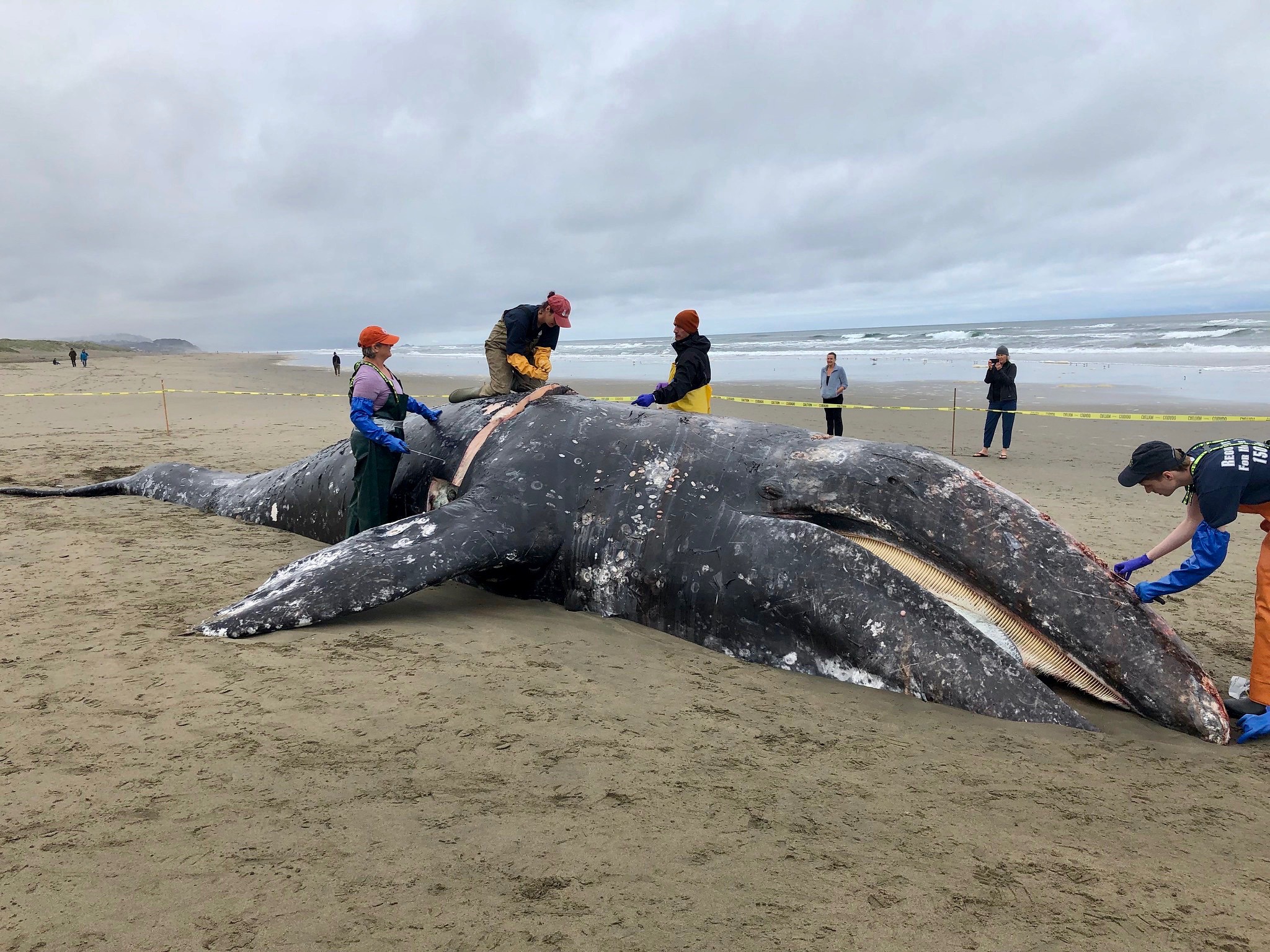Farallones Dispatches: "Crisis on our Coast, Echo of the Past"
It was mid-January when the gray whale neared her familiar breeding grounds, San Ignacio Lagoon in Baja California. Heavy with calf, she had swum nearly six thousand miles from her feeding grounds in Alaska’s Bering Sea, hardly pausing to rest, so urgent was her need to reach the lagoon’s sheltered waters. She rounded Punta Abreojos – named Point “Open Your Eyes!” because of its hazards to mariners. Line after line of waves pushed in from the dark blue Pacific, launching themselves over the bar at the lagoon entrance. Practically surfing in, the whale cleared the narrow gap. Her time was very near, so she swam past the mating groups of whales, directly into the quiet Upper Lagoon nursery, where she gave birth. Her calf nursed normally at first, but then languished. One night, it disappeared. Perhaps the milk she had produced wasn’t fatty enough; perhaps the calf hadn’t developed properly within her. She herself was utterly exhausted by her long journey, and giving birth.
The whale had spent the past summer foraging in the Arctic for benthic amphipods, the gray whale’s staple food: tiny crustaceans that live in the seafloor. Near the edges of ice sheets that usually cover the shallow Bering and Chukchi seas, as many as 14,000 “mud bugs” may occupy a square meter of sediment. Amphipods feed on dead algae that rain down onto the sea floor from beneath the ice. Near the edges of ice sheets, gray whales gouge out swaths of mud teeming with these fat-filled, living energy packets. Filtering the silt while trapping the food behind sieve-like baleen plates, the whale should have acquired a several-inch thick blubber layer over the summer. Blubber is Beautiful, when you’re a whale. And these whales need that accumulated fat to survive their long, fasting migration to Baja and back again.
But in 2017 and 2018, there had been virtually no ice in the Bering Sea. Air and water temperatures were higher than normal, preventing ice formation. No ice: no algae. No algae: no amphipods, and scarcity of amphipods meant the grays went hungry. Some tried switching prey and new locations, with limited success.
Nonetheless, last fall they began their annual journey, but without adequate energy reserves. Half the single whales reaching the lagoons were notably skinnier than usual - four times the average. Many gray whales doubtless died at sea undetected; others washed up on shore; still others, weak and starving, entered harbors and estuaries like San Francisco Bay, in abnormally high numbers. They sought food, or refuge from heavy seas, and the springtime threat of killer whales.
NOAA scientists are still investigating the extent and root causes of this die-off. Strandings continue to increase along our coast, with over 60 recorded to date (May 23, 2019), compared to 25 in 2018. Necropsy (post-mortem) reports often noted, “emaciated” or “malnourished.” Whales that would ordinarily have transited Greater Farallones National Marine Sanctuary as part of a marine superhighway northbound were killed by vessels as they sought safe harbor along the busy shipping lanes converging on the Golden Gate and bay beyond.
In 1999-2000 NOAA declared an Unusual Mortality Event when 30% of the world’s gray whale population died: an estimated 6,138 whales out of approximately 21,000 total. The same lack of Arctic ice and amphipods were deemed causal factors. But in 2007 they began to increase, and now number around 27,000. Clearly, this species has demonstrated resiliency in the face of change. Their flexible opportunism has maintained the species through gradual warming and cooling phases over its millions of years on our planet. Still, the ecosystem changes in the Arctic due to warming events clearly have repercussions far beyond the remote vastness of the north. They have become evident along our coast, in the news, and in our consciousness.
June 8 marks World Ocean Day, and, despite this tragic event, it is cause to celebrate – so long as we celebrate the good we have accomplished, but with a determination to do much, much more for the health of our Blue Planet, for the good of all the world’s species. We have hope and our future before us. And a “hella” lot of work ahead.









